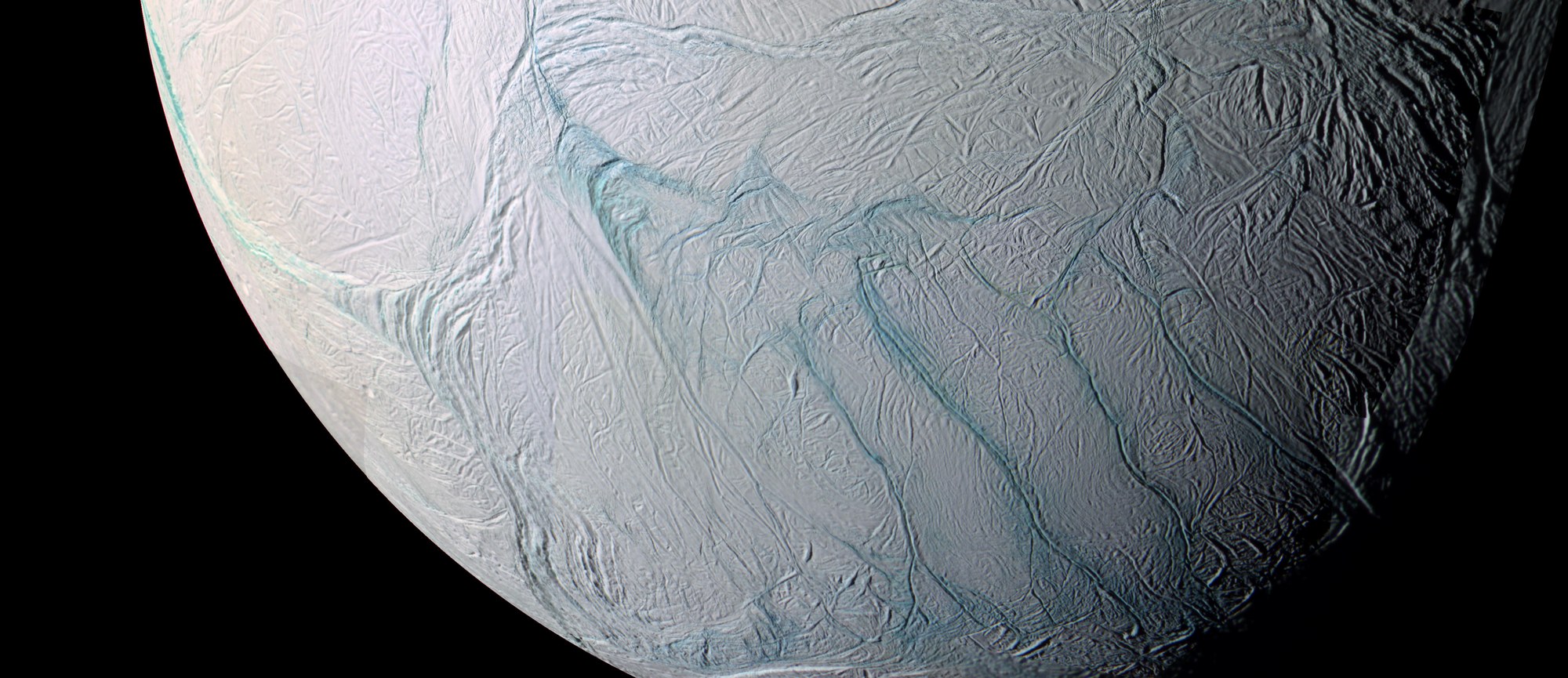Ice volcanoes on Enceladus
Ice volcanoes on Enceladus
At only 500 kilometres in diameter, the Saturnian moon Enceladus does not have sufficient mass to allow enough heat to be generated in its interior to melt the ice in its mantle. However, the Cassini spacecraft discovered fissures on this small icy moon that eject hundred-kilometre high fountains of water into the vacuum of space. The droplets freeze immediately and most fall back onto the icy surface, but some also feed Saturn’s outer rings.
Enceladus appears to gain enough energy to produce reservoirs of melted ice under its icy crust from the action of tidal forces exerted by Saturn, its 120,000-kilometre diameter gas giant host planet. Under high pressure, this water is discharged into space through prominent systems of fissures at the South Pole – a form of volcanic activity referred to as ice volcanism or cryovolcanism, as opposed to the magmatic volcanism seen on Earth.

